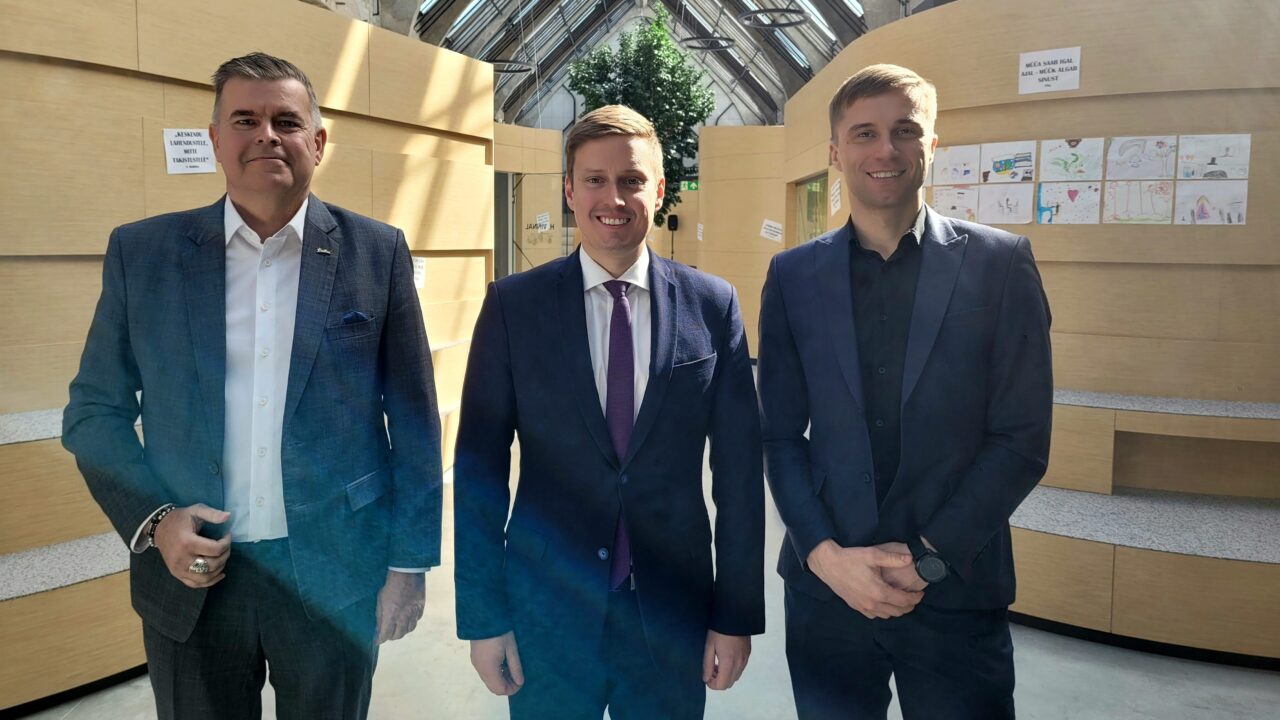Employer: foreign workers raise wages for all Estonians

“Today, we are at a stage where quality immigration would raise the wages of Estonians,” stresses Risto Mäeots, head of Magnetic MRO, an aircraft maintenance company. The company, which provides a high value-added service, would like to grow strongly and employ several dozen people, but there are no employees.
“Magnetic MRO would not exist without foreign workers,” Mäeots stressed in the radio programme “Employers’ Hour”.“I could hire 60 specialists in a day, if it were possible.” The company, an exporter of high value-added services, has built an internationally competitive business here with the skills of foreign workers.
“Our service is very complex. We do aircraft painting, which no one in Estonia had done before. We had to bring in foreign specialists to train Estonians,” he explained. Similarly, the jet engine maintenance service, which also lacked previous experience in Estonia, was born and grew. “With the help of foreign specialists, we have created a new industry in Estonia, and we are creating wealth in the country.”
Survey: need for foreign workers is growing
The recently completed OSKA survey of foreign workers shows that the need for foreign workers is growing in the wider business sector. Even if the state alleviates the shortage of skilled workers through education policies, unemployment reduction, upgrading the skills and qualifications of the local workforce and other measures, it will not be enough. Domestic opportunities are limited and the inclusion of some foreign labour is essential.
With a low birth rate, an ageing population and a shrinking working-age population, there will be a shortage of more than 2,000 top professionals and skilled workers every year over the next decade, plus more for menial jobs.
Minister: making an exception for smarter industry
This was acknowledged by Erkki Keldo, Minister of Economic Affairs and Industry, who explained that the government is reviewing labour migration. For example, the 30-year immigration limit on recruitment from third countries, which Magnetic MRO has also used, could be given an additional exemption. This means that exporting sectors with a shortage of workers and high added value could hire an additional 1,300-2,600 foreign workers outside the quota.
“We have already made exceptions for scientists, IT engineers, programmers. So now we are working with the government to prepare an exemption for skilled workers. We want more and more smart industry to come here and we want the industry to grow and develop,” explained Keldo. “Our labour migration has been and will continue to be one of the most conservative with this change.”
Migrating to work temporarily
However, he says, labour migration is often confused with mass immigration, partly to scare people. “The debate often gets emotional. Throwing up the idea that we are now going to have 9,000 people coming every year as a result, well, the statistics don’t bear that out,” he said. “Labour migration is one of the more controlled and specific types of migration, where you have to have a valid employment contract in your pocket, you have to come here to earn an income or to apply a particular skill.”
Ain Käpp, head of the Radisson and Palace hotels and head of the labour market working group of the Confederation of Employers, stressed that labour migration is temporary and that only a minority – around 14% of people – take a family member with them. This was confirmed by Mäeotsa’s experience.
“We come for one, two or three seasons. We’d like them for longer because it takes years to train professionals in Estonia, and I could give a guarantee for several years, but they don’t want to afford to stay very long. They enjoy the freedom that maybe somebody somewhere will offer me more money and then they might go to a competitor,” Käpp described.
Estonia must start promoting itself as a destination, says CEO
In addition to legal issues, you need to think about marketing. “In the future, why not have Estonia advertise in markets where it wants to attract new people to work for a limited period of time?” explained Käpp. “Temporary labour migration is, after all, in Australia and Dubai, and it works well without the country being harmed in any way. We can learn from Scandinavia’s mistakes and, as a small country, come up with even better solutions.”
Keldo says this is in the pipeline. Keldo, who has met with the new interior minister, who is responsible for these matters, said that speeding up the process was being discussed. “I’ve received feedback from companies that we are a digital country, but the process of recruiting foreign workers is quite paper-intensive and technical. We will find IT funding to automate the process,” he said. In addition, there are plans to cooperate with specific target countries with which Estonian security agencies have better information exchange. “This will also ensure security. If members of society understand how labour migration works, there will be no political or social resistance,” the minister assessed.
The article appeared in the columns of the newspaper Äripäev.